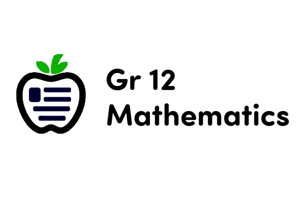Podcast
Questions and Answers
Which of the following formulas is used to find the sum of an arithmetic series?
Which of the following formulas is used to find the sum of an arithmetic series?
- $S_n = F_n + F_{n-1}$
- $S_n = rac{n}{2} (a + l)$ (correct)
- $S_n = rac{n^2}{2}$
- $S_n = a rac{1 - r^n}{1 - r}$
What characterizes an arithmetic sequence?
What characterizes an arithmetic sequence?
- The terms can only be positive.
- The ratio between consecutive terms is constant.
- Each term is the sum of the previous two terms.
- The difference between consecutive terms is constant. (correct)
What is a geometric series used to sum?
What is a geometric series used to sum?
- A sequence where the difference between terms is consistent.
- A sequence where the ratio between terms is consistent. (correct)
- A sequence with positive integers only.
- A sequence of Fibonacci numbers.
Which statement describes convergence in the context of series?
Which statement describes convergence in the context of series?
What defines a Fibonacci sequence?
What defines a Fibonacci sequence?
Flashcards are hidden until you start studying
Study Notes
Sequence
- Definition: An ordered list of numbers, called terms, where each term can be identified by its position.
- Types of Sequences:
- Arithmetic Sequence:
- Difference between consecutive terms is constant (common difference).
- General form: ( a_n = a + (n-1)d ), where ( a ) is the first term and ( d ) is the common difference.
- Geometric Sequence:
- Ratio between consecutive terms is constant (common ratio).
- General form: ( a_n = a \cdot r^{(n-1)} ), where ( a ) is the first term and ( r ) is the common ratio.
- Fibonacci Sequence:
- Defined recursively as ( F_n = F_{n-1} + F_{n-2} ) with seed values ( F_0 = 0 ), ( F_1 = 1 ).
- Arithmetic Sequence:
Series
- Definition: The sum of the terms of a sequence.
- Types of Series:
- Arithmetic Series:
- Sum of terms of an arithmetic sequence.
- Formula: ( S_n = \frac{n}{2} (a + l) ) or ( S_n = \frac{n}{2} [2a + (n-1)d] ), where ( n ) is the number of terms, ( a ) is the first term, ( l ) is the last term, and ( d ) is the common difference.
- Geometric Series:
- Sum of terms of a geometric sequence.
- Finite series formula: ( S_n = a \frac{1 - r^n}{1 - r} ) (for ( r \neq 1 )).
- Infinite series formula: ( S = \frac{a}{1 - r} ) (for ( |r| < 1 )).
- Arithmetic Series:
Important Concepts
- Convergence: A series that approaches a finite limit as the number of terms increases.
- Divergence: A series that does not approach a finite limit as the number of terms increases.
- Partial Sum: The sum of the first ( n ) terms of a series, often denoted as ( S_n ).
- Recurrence Relation: An equation that recursively defines a sequence or series.
- Sum of Natural Numbers: ( S = \frac{n(n+1)}{2} ), where ( n ) is the largest number in the summation.
Applications
- Used in calculus, computer science (algorithms), finance (interest calculations), and various areas of mathematics and engineering.
- Understanding arithmetic and geometric sequences is critical in problem-solving and modeling real-world scenarios.
Sequences
- A sequence is an ordered list of numbers, called terms, where each term can be identified by its position.
- Arithmetic sequences have a constant difference between consecutive terms, known as the common difference.
- The general form is ( a_n = a + (n-1)d ), where ( a ) is the first term and ( d ) is the common difference.
- Geometric sequences have a constant ratio between consecutive terms, known as the common ratio.
- The general form is ( a_n = a \cdot r^{(n-1)} ), where ( a ) is the first term and ( r ) is the common ratio.
- The Fibonacci sequence is defined recursively as ( F_n = F_{n-1} + F_{n-2} ) with seed values ( F_0 = 0 ), ( F_1 = 1 ).
Series
- A series is the sum of the terms of a sequence.
- Arithmetic series are the sum of the terms of an arithmetic sequence.
- The formula is ( S_n = \frac{n}{2} (a + l) ) or ( S_n = \frac{n}{2} [2a + (n-1)d] ), where ( n ) is the number of terms, ( a ) is the first term, ( l ) is the last term, and ( d ) is the common difference.
- Geometric series are the sum of the terms of a geometric sequence.
- The formula for a finite geometric series is ( S_n = a \frac{1 - r^n}{1 - r} ) (for ( r \neq 1 )).
- The formula for an infinite geometric series is ( S = \frac{a}{1 - r} ) (for ( |r| < 1 )).
Important Concepts
- A series converges if it approaches a finite limit as the number of terms increases.
- A series diverges if it does not approach a finite limit as the number of terms increases.
- The partial sum is the sum of the first ( n ) terms of a series, often denoted as ( S_n ).
- A recurrence relation is an equation that recursively defines a sequence or series.
- The sum of the first ( n ) natural numbers is given by ( S = \frac{n(n+1)}{2} ).
Applications
- Sequences and series have applications in calculus, computer science (algorithms), finance (interest calculations), and various areas of mathematics and engineering.
- Understanding arithmetic and geometric sequences is essential for solving problems and modeling real-world scenarios.
Studying That Suits You
Use AI to generate personalized quizzes and flashcards to suit your learning preferences.




